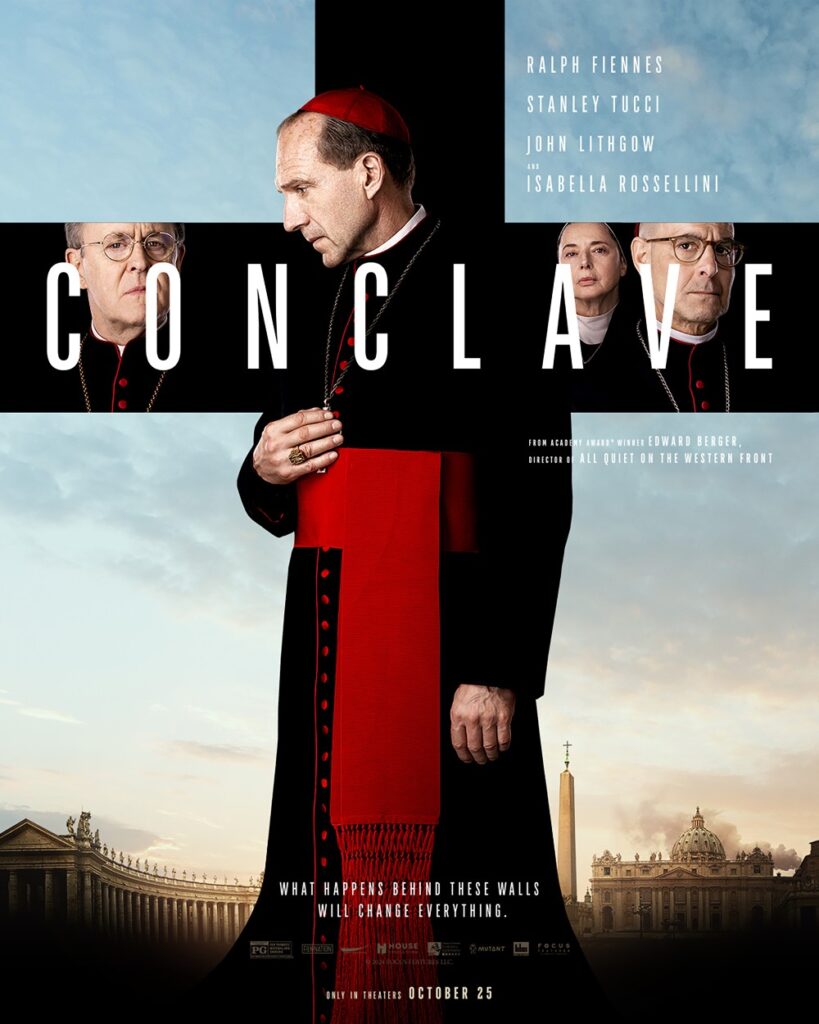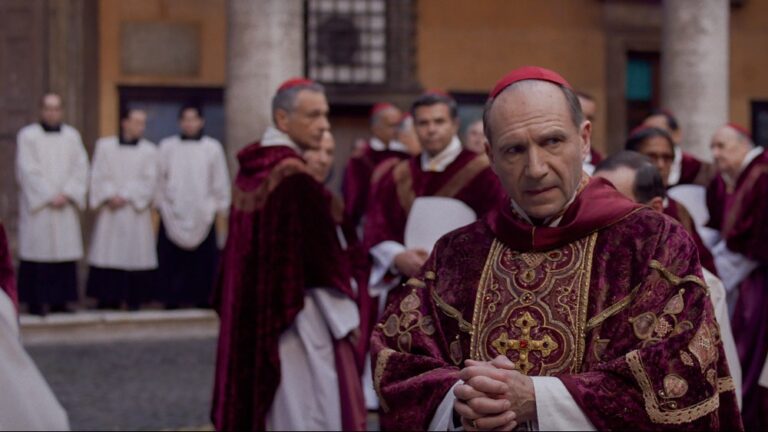
Production designer Suzie Davies was already nominated for an Oscar for designing Mike Leigh’s 2014 period drama, Mr. Turner, starring Timothy Spall as the British Romantic era painter, J.M.W. Turner. Last year, Ms. Davies found and designed the amazing central location that was the titular Saltburn for Emerald Fennell’s dark thriller. Now, she’s teamed up with Edward Berger for Conclave, a thriller where the location plays just as an important role, since it takes place almost completely at the Vatican where they need to find a replacement for the recently-deceased Pope.
Recently, Cinema Daily US had a great interview with the Oscar-nominated production designer that gives you a good idea of all the moving parts involved with designing and finding locations for a movie like Conclave. We also spoke briefly about her latest collaboration with filmmaker Mike Leigh for his upcoming film, Hard Truths.
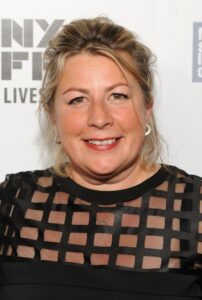
CDUS: I was really impressed with the film’s Vatican setting, and what it added to the scale of the film, so I was excited to see your name in the credits. How were you approached by Edward to design this? Had Saltburn come out already, or had someone seen your previous work?
Suzie Davies: No, weirdly, I was on Saltburn when I met Edward. We were just filming still I think on Saltburn, because I think I came out for the recces (i.e. the location scouting) over weekends, whilst we were filming in the UK on Saltburn. Those early recces in the summer of ‘22 was a crossover between Saltburn and Conclave. I met Edward through [production company] SunnyMarch. We prepped a job during the lockdown. I think everyone was working on jobs remotely, so we were reccing the world from the beauty of our computers for a project that never happened with SunnyMarch. Adam Ackland had put me in touch with Edward, and I guess when this film came up there was a little window, and he reached out. When someone offers you such a cracking script with a great director and cast and based in Rome, it’s an easy decision, really.
CDUS: I spoke to Edward last week. I think he mentioned that it was all shot in Rome at different locations, it was all different places you found there.
Davies: Yeah, the majority. We obviously did a couple of stage builds at Cinecittà, but I’d say two-thirds of the film was out and about on location. We patched together elements of Rome to create our Vatican City.
CDUS: How do you research a movie like this? I don’t expect that the Vatican just lets you walk in there with a camera and start taking pictures. I’m not even sure if there are books with pictures of the Vatican’s interiors.
Davies: No, but I guess that was the fun part for us, because there are elements of the Vatican that everyone knows, that you can go and wander around on. If you’ve gone to Rome, you’ve done a Vatican tour on the whole, so we obviously did that, but you’re not allowed to take any photographs. There’s a certain amount of information on the internet, and how a conclave works is very well documented – I think it’s taught in schools, so that was very clear. The fun part for us was creating the behind the scenes element of Conclave, the flip side, the opposite. What happens when the doors are closed? We did a certain amount of research and just found out that actually there are elements of the Vatican City that are pretty dull. The Casa Santa Marta is quite a modern building, but it’s nothing to write home about. Edward and I didn’t want a hotel like that for these cardinals. Edward knew what he wanted, and he wanted to have this more thriller-esque ‘70s thriller movie vibe. I embraced some of the more modern architecture of Rome of which there’s many – this modernist brutal almost fascist architecture. We built the flip side. That behind the scenes is a build and then a jigsaw of some found locations. You play with the traditional side of Rome and then the contemporary side, all the way through really.
CDUS: Did you take anything from the original book, or did Peter Straughan already describe a lot of those places in his script?
Davies: Yeah, I mean, you get a script like that, and the descriptions are fabulous. I think by the time it got to a screenplay it already been heightened a bit more visually for us, and again, how Edward want to tell that story enabled us to play a little bit more with the elements that people don’t know. It became our choice to make that prison feel. There is no freedom. They’re locked in, they’re almost underground. We lowered the ceilings. We made it feel very heavy, as opposed to the beautiful ornate ceilings of Caravaggios you get in Rome.
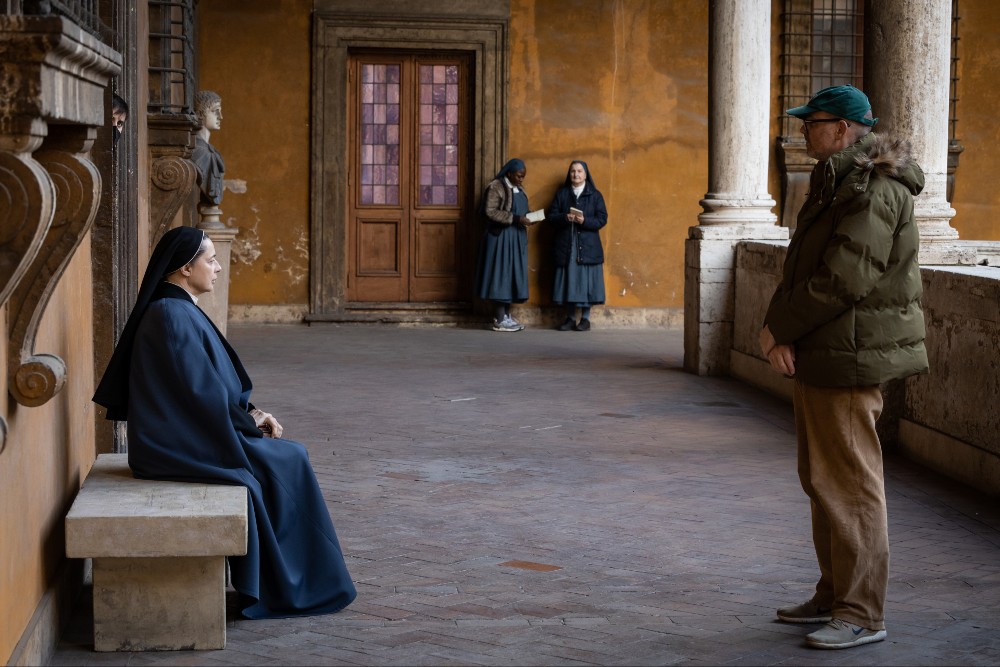
CDUS: Whenever I see a movie like this where there are so many different rooms and hallways, many that just appear for a single scene, I find it quite interesting, especially since there are many scenes of just two actors talking. How is it decided where these conversations are going to happen? Is that stuff that’s figured out well in advance, so you can have those locations ready, or can that often change during the shoot?
Davies: It’s a mixture. Edward is very prepped. He’s done a shot list for just about everything by the time we get to the shoot, so that’s very clear. I think he’s already edited his story as well, so he knows the beats he wants to get. He’s very visual, and he’s very graphic. We did a lot of location recces, which inspires and informs you. I find that films are often designed in the back of the recce van, so we’d have discussions when we’re driving around Rome [about] how that light hits that building or those windows or vehicles. We talk all about all sorts of things, and you end up honing into a certain direction. Yes, it is informed during those times. There are lots of secret discussions in dark corners, but we love the graphicness of some of the staircases. There are probably three or four different staircases in this one building and a lift when you decipher it all, but it makes sense to us that they’ve gone to have their secret meetings. Long corridors always look great in a movie, so I built the longest one I could. [chuckles]
CDUS: There are so many pieces to the puzzle of a movie like this, which also shows what a great director Edward is, that he can get all the pieces to fit together, especially when it comes to the actors. Ralph appears in every scene, but there are a few actors who are only in a few locations, so do you get enough notice to have those locations ready? Are you involved with a lot of that planning?
Davies: Yeah, it’s a bit like a jigsaw. To a certain extent, obviously, all the different departments, we cross over at some stage. The logistics side of it does come into how we get that scene onto filming, and it’s working closely with the ADs, the assistant directors, who do the schedule with the location managers, and it’s about piecing it together. Obviously, it would be lovely to make a film in story order, so on Day One, you film Scene One, but that very rarely happens. We probably started on Scene 33 and then jumped to five and then went to six. You film it in blocks of the locations basically, and yes, you can get thrown, because sometimes an actor isn’t available on the day the location is available and who wins? Usually, the actor wins, and we have to move the location.
CDUS: Were you able to put together your own team from people you’ve worked with before or did you find a lot of people in Italy?
Davies: It was all local crew here, so I rocked up and met a fabulous team, and we put a team together of local Italians, which was fascinating, obviously quite daunting to a certain extent, but I’ve worked abroad a lot and there’s an energy and a dynamism that comes from working with different crews. There’s a different level of expertise. There’s a different input that I found really fascinating and really rewarding ultimately. Their painters and craftsmanship is extraordinary.
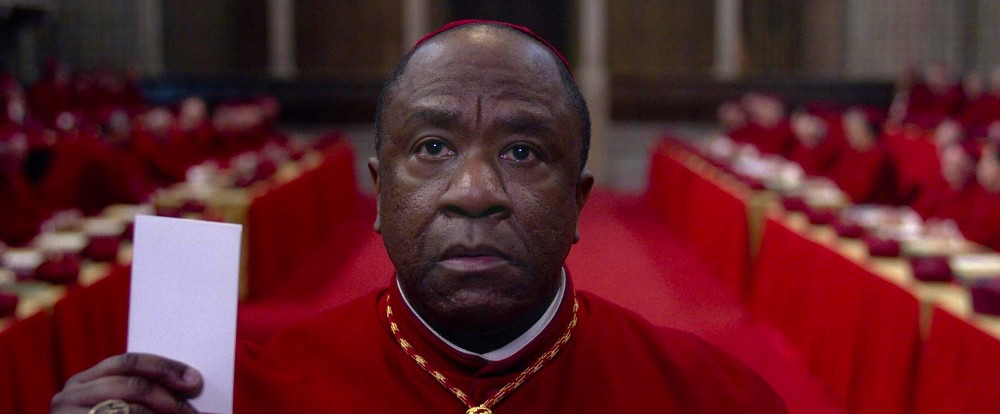
CDUS: Did you find that most of the crews there could speak English, or did you always have a translator around for anyone in the construction or painting side of things that didn’t speak English?
Davies: On the whole, their English was amazing, much better than my Italian. But I work in a visual language, so it was a lot of drawings on bits of paper or communicating through a visual language of hand-drawing. My right-hand woman was Roberta Frederico, my supervising art director, and her English was amazing, so I think it got spread out. Hopefully anyway. [laughs]
CDUS: Last time we spoke, we touched upon your work with Mike Leigh, because I’m a huge fan of his movies. I loved the work you did on Mr Turner and Peterloo, and I’ve seen Hard Truths now, and that’s such a different movie, since it’s back to being a modern family drama after doing these big historic pieces with him.
Davies: Thank you. Yeah, really different job, but wonderful and beautiful, because he likes to get the same crew back together every time, so I feel part of his family now. I’ve had the opportunity now to work for him four or five times now, and that’s completely changed the way I do my job. I think I’m much more aware of the characters and how the actors inhabit their worlds, and that’s my anchor point. I guess with Hard Truths, I was like, “Brilliant because I’m going to get to know what these characters are and there’s going to be all this detail.” In actual fact, when I spoke to Marianne Jean-Baptiste, and she told me about her character being the tidiest woman you’ve ever met and constantly cleaning. I was like, “Where’s the detail? What am I gonna do?” That color palette and where she lived and how she lived, but actually it was amazing that the lack of detail gave the character… pulling back and not putting too much in those spaces and not playing too madly with the colors just gave the piece a little bit extra. I’m very chuffed to be part of that film for sure.
CDUS: I haven’t spoken to him for this movie, but I’ve spoken to him in the past, as well as the actors who’ve worked with him. I know his process involves with rehearsing with actors to create the characters even before he’s written a script. Are you pulled into that process that early, so that you can determine what their homes look like as the characters are developed?
Davies: Yeah, absolutely. I came in so early that when they were forming their characters, they will go out into the world and perhaps walk down the street where they think their house might have been when they grew up and what their first house looked like that they bought when they first married. When I met Marianne, she knew her character was married and where they lived, and she was able to give me the names of the streets from their rehearsal and their research. They had gone and walked around London, so myself and the location manager went to walk around those streets as well to try and feel, “Okay, so this is the type of house that they might be in.” So I’m absolutely involved in that and with Mike, I meet up with the actors and talk to them about their characters. “What would your kitchen table be if you needed a new one? Where would you get that?” How they answer informs me on how the whole of the kitchen will look like, whether they get a second-hand kitchen table or they get a brand new one or they’d make it themselves All those answers take you in a different direction of the rest of the house.
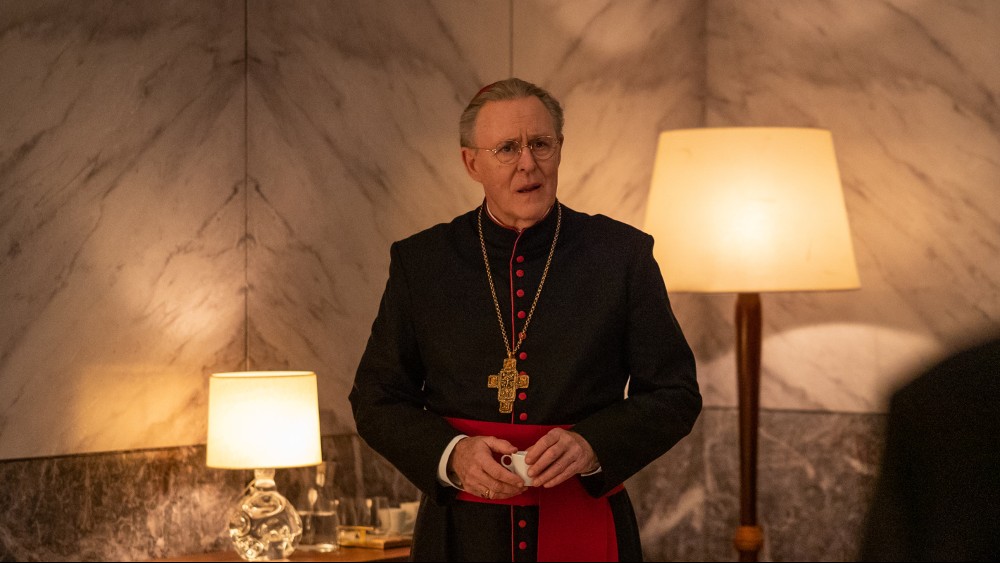
CDUS: Was that similar for Conclave where you might talk to Stanley Tucci to figure out what his character’s room might look like?
Davies: It’s almost an indulgent with Michael, though he wouldn’t say that, because that’s how he works to have that amount of time, and of course, with the actors on a film like Conclave, you don’t get that much time. However, what I do get is all the time with Edward, so I’m able to sort of ask the questions I’d ask his actors. Because they’re all living in these apartments, that’s all going to look the same. How do we characterize them? We did give them all a little bit of a backstory like John Lithgow’s character, we think probably someone made a call before he arrived, so he got a better suite. We know that Lawrence’s character [played by Ralph Fiennes] didn’t care. He was probably on the worst room on the ground floor next to the lifts. Stanley’s character, he probably got a good one – one of his assistants had a word, or maybe he even changed the room numbers around. All those things, it’s quite fun, and who had the brighter-colored be linen. It was those little details that we changed. Who had the better coffee machine? Well, we know who that was, so…
Conclave is now playing in theaters nationwide. Hard Truths will open in New York on December 6 and then expand nationwide in the New Year.
Check out more of CinemaDaily US’ video interviews on our YouTube channel
Director: Edward Berger
Screenwriter: Peter Straughan
Cast: Ralph Fiennes, Stanley Tucci, John Lithgow, Isabella Rossellini, Lucian Msamati, Carlos Diehz, Brían F. O’Byrne, Sergio Castellitto
Producer: Alice Dawson, Robert Harris, Juliette Howell, Michael Jackman
Production Co: Indian Paintbrush, FilmNation Entertainment, Access Entertainment, House Productions
Distributor: Focus Features
Rating: PG (Thematic Material|Smoking)
Genre: Drama, Thriller
Language: English, Italian, Spanish, Latin
Release Date (Theaters): October 25, 2024
Runtime: 2 hours
If you like this video interview, please share your comments below.
Check out more of Edward Douglas’ articles.
You can watch the trailer below:


